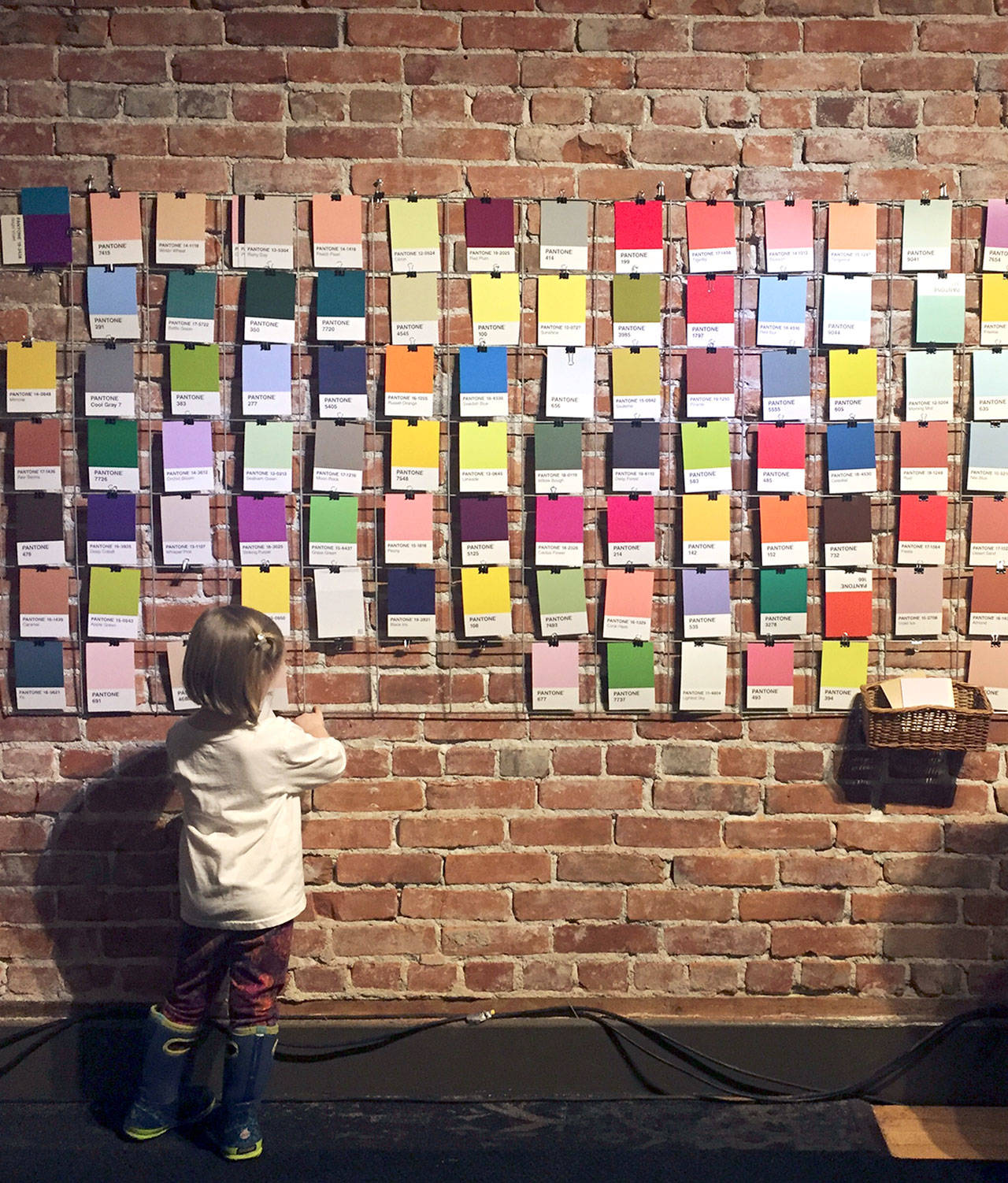PORT ANGELES — Officially the title is just “Bench,” but this odd art piece has picked up some nicknames.
“Can’t Stay Mad at You Bench,” “Friendly Bench,” “The Happy Bench” — whatever you want to call it, it’s coming to the Port Angeles Fine Arts Center this week. So are a collection of other artworks that brazenly invite people to handle, climb into and add to them.
The fine arts center’s new show, “pARTicipation,” features “Bench” by Brian Rush of Portland, Ore., as well as the “Mutual Suspension Bands” by Vivian Harp of Oakland, Calif., and “Chalk Talk” by Eva Kozun of Sequim.
They’re part of an exhibition full of participatory art; it all starts with an opening reception from 5 p.m. to 7 p.m. Saturday. The show will stay up through June 30 at the fine arts center at 1203 E. Lauridsen Blvd., where admission is free.
Throughout the show, hours are from 11 a.m. to 5 p.m. every Thursday through Sunday. For information about this and other activities at the center, see www.pafac.org or call 360-457-3532.
In addition, Gallery and Program Director Sarah Jane will give a talk, “A Brief History of Participatory Art,” at 11 a.m. Saturday, May 11. The talk is free and open to the public.
Jane, who curated “pARTicipation,” stumbled into making participatory art when she was a graduate student 12 years ago.
“I fell in love,” she said, “with how readily viewers connect with art when they’re invited to touch, alter or add to a piece. It breaks down a lot of the barriers we feel when walking into a gallery: that feeling of maybe not belonging there, and a fear of saying or doing the wrong thing. There’s a playful, disarming quality,” so the art can address ideas that might be tougher in a different setting.
Participatory art can be great for families with small children, Jane added, since very young viewers tend to connect right away with something they can touch and play with.
The pieces she has assembled in “pARTicipation” aim to bring people in physically and emotionally — even when it’s strange and silly. Take Rush’s piece.
“At first glance the bench is not much different from an industrial-grade park bench,” he said, “but upon closer inspection, the part you sit on is curved, almost like a smile.” The seat has little rollers on it, so when two people sit down, they will roll to the center and sit right next to each other.
“Slightly awkward, but playful” is the effect Rush is going for.
Nearby another Rush piece awaits: the “Selves Portrait.” For this one, two people sit down at a table before a mirror. Sharing a piece of paper and a dual-pencil mechanism, they draw a portrait of the other person. Instructions are posted on the wall to help out.
Since the pencils are connected, the participants have to work out where the lines go next. They get to create something entirely original. A sense of humor comes in handy.
Harp’s “Mutual Suspension Bands” likewise connect two or more people. The stretchy bands are hanging on a rack, ready for visitors to pull them down and wrap up in them, cape-like. As another person steps inside, the material allows for the participants to come closer or lean back, all the while supporting one another. Every time somebody moves, everybody has to rebalance.
The cloth, Harp said, shows how we’re affecting and being affected by other people at the same time — and this can make for a hilarious situation. To her mind, it’s all about good humor and curiosity.
Kozun’s “Chalk Talk” will take the form of a tree whose branches invite input from passers-by.
A 10- by 8-foot blackboard tree will have quotations from artists throughout history — plus chalk and markers people can use to add their own musings about what art means to them.
“I love to engage people,” said Kozun, who teaches art classes for children in Sequim and displays her own work around town. A fine arts center volunteer and member of the Olympic Peninsula Art Association, she first conceived “Chalk Talk” for OPAA’s 50th anniversary celebration.
The “pARTicipation” show offers “a chance to experience something we don’t typically see outside of big-city museums,” Jane added.
“I really believe art is for everyone,” she said, “and I hope that everyone will feel welcome at this exhibition.”

